
A decade ago, SEO strategies followed a relatively similar formula – conduct keyword research, stuff the selected keywords into your webpage content, and voila, your page could rank number one for that keyword. This approach, however, has drastically evolved due to the advent of semantic search.
Semantic search moves beyond just keywords to focus on search queries’ actual intent and contextual meaning. So, it’s not merely about using certain keywords but understanding why users search for them and what they intend to do with the information.
This evolved approach brings a level of sophistication to SEO, particularly for WordPress, which powers over 43% of all websites globally as of 2023.
The addition of semantics to the search process means the user’s intent, query context, and relationships between words are evaluated to generate the most accurate results possible. Advanced intent comprehension enables WordPress sites to serve their audiences better by providing more relevant content and improving overall user experience.
Disclaimer: This is a guest blog submitted by Jaya Iyer, an SEO writer.
Dominate SERPs with Performance-Focused SEO Hosting
Clear your way to the top SERPs with an optimized SEO hosting & break yourself free from hosting hassles as well.
The Evolution of Semantic Search
The world of Search Engine Optimization (SEO) has come a long way since its inception, and semantic search is a significant contributor to its evolution. So, what does semantic search entail, and how did it become such a pivotal part of SEO? Let’s learn more about its history and why Google favors it over traditional SEO practices.
Semantic Search: History and Origin
Before the introduction of semantic search, search engines functioned by matching exact keywords entered by users with the keywords present in indexed web content. While this model worked to some extent, it often fell short in understanding the nuance and context behind the user’s query, leading to less accurate search results.
So, semantic search emerged as a response to the limitations of traditional, keyword-based search models. The term “semantic” refers to meaning or understanding, which indicates that semantic search aims at comprehending the user’s intent and the contextual meaning of the query rather than focusing only on individual keywords and their frequency.
This model of search was primarily born out of the need to understand and interpret complex, natural language queries and provide more accurate and relevant search results.
Google’s Significant Updates
The transition from traditional keyword-focused search to semantic search wasn’t a sudden leap, but rather, it was punctuated by a series of critical updates to Google’s algorithm. Four updates, in particular, hold significance in this shift – Hummingbird, RankBrain, BERT, and MUM.
Hummingbird
Google kick-started this transformation in 2013 with the introduction of the Hummingbird update. This major revamp of their search algorithm aimed to more effectively comprehend the underlying intent of a user’s search query.
It signaled a departure from focusing on individual keywords to understanding the context of entire search phrases, thus transitioning to an intent-based search model.
RankBrain
In 2015, Google took another stride forward by introducing RankBrain, a machine-learning component of their search algorithm. This enhanced Google’s proficiency in discerning the context and intent of search queries, especially those that were complex or previously unseen.
By leveraging machine learning, RankBrain can learn from historical search data to refine its results delivery over time, thereby improving relevance.
BERT
Fast forward to 2019, Google rolled out the BERT update. This change was geared towards deciphering user intent and the context of conversational searches with heightened precision.
This shift influenced SEO strategies, leading marketers to favor lengthier, descriptive search phrases that could more effectively answer user queries.
MUM
Finally, in 2021, Google enhanced its technological landscape by unveiling the Multitask Unified Model, also known as MUM. Hailed as 1,000 times stronger than BERT, MUM excels at interpreting a wide array of data types, including images, videos, and audio files.
Its ability to assimilate information from numerous languages, regardless of the language of the user’s query, stands as a distinguishing feature.
Core Elements of Semantic Search
Let’s dig deep into understanding what makes semantic search so special and accurate.
A Deeper Understanding of Context and Personalization
Semantic search prioritizes context and personalization, leading to not just understanding the words users input into search queries but interpreting their meaning, intent, and nuances.
For instance, when a user searches for “Apple,” are they looking for information about the fruit or the tech giant?

Impact of Semantic Search on User Intent and Query Categorization
Semantic search plays a pivotal role in discerning user intent and accurately classifying queries. By incorporating context, personalization, and other subtle factors, semantic search ensures that the search engine delivers results that accurately mirror the user’s needs and preferences.
Consider an example with the search term “Jaguar.” This word has different meanings in various contexts. It could refer to an animal species, a luxury car brand, or even a sports team.
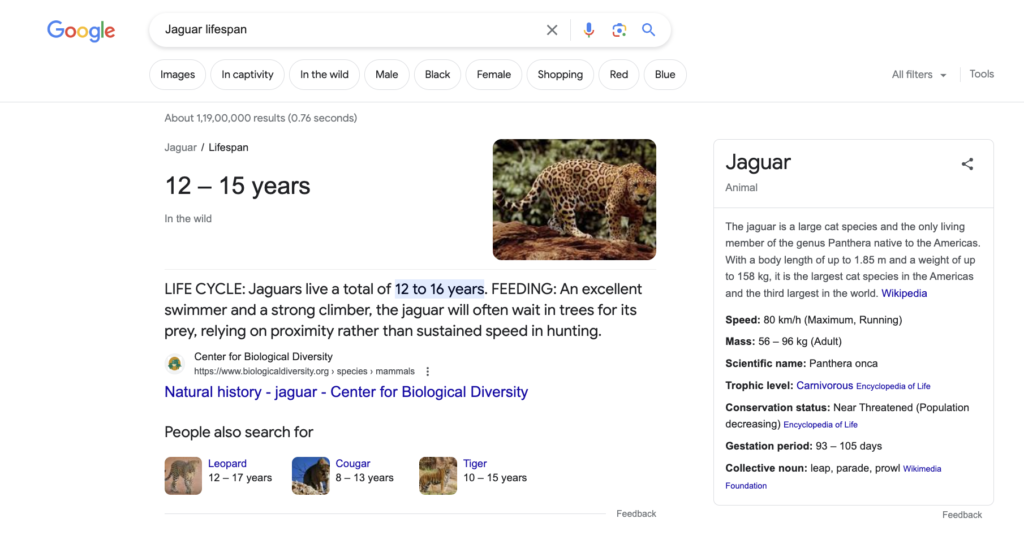

Distinguishing Semantic Search from Keyword Search
Traditional keyword search relies on matching user queries with relevant keywords present in the content. Contrastingly, semantic search goes a step beyond interpreting the meaning and intent behind these queries. The result is a more precise, personalized set of search results, enhancing user satisfaction.
Consider the following snapshot from Ahrefs‘ Keyword Explorer after entering the term “laptop“. The displayed suggestions primarily focus on direct keyword matches, which indicates the keyword search approach.
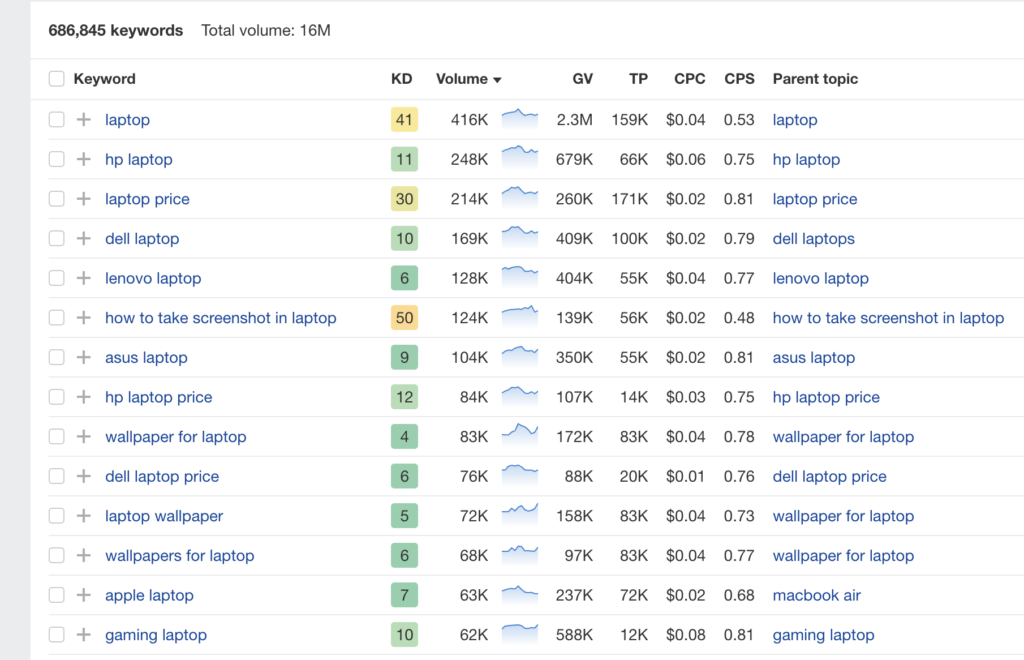
Now, let’s take a look at Ahref’s “Also rank for” sections for “laptop“. Here, the terms listed, which are semantically linked to “laptop”, mirror user intent and associated ideas – a testament to semantic search capabilities.
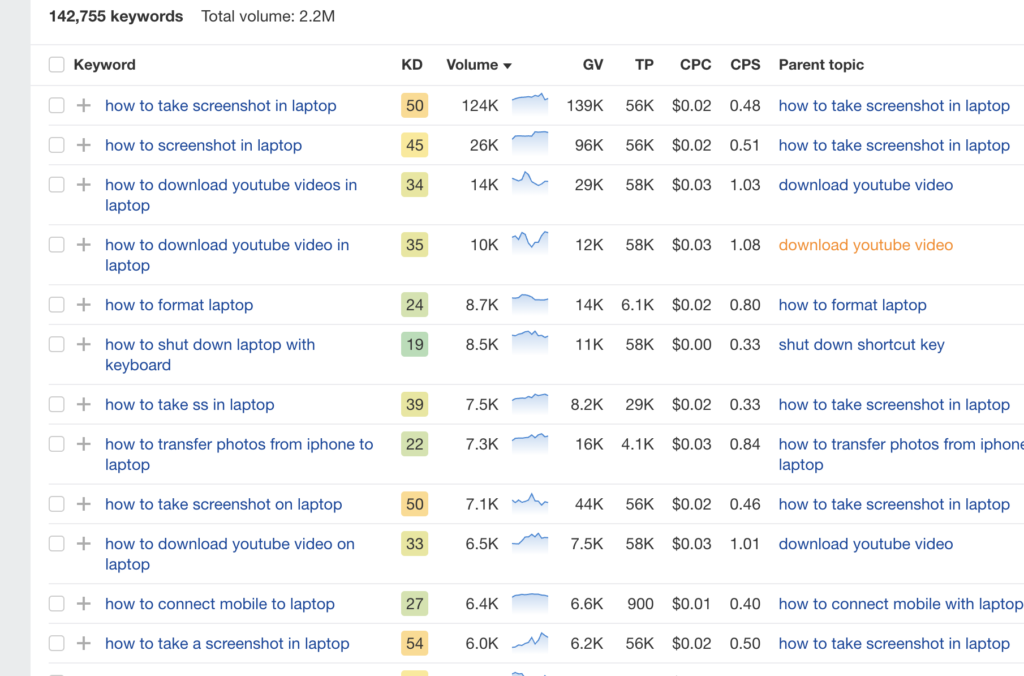
These snapshots underscore the stark difference between keyword and semantic search and the importance of understanding this when strategizing for SEO.
<id=”core-elements”>Going Beyond Synonyms: Understanding Query Nuances
In keyword searches, the use of synonyms can expand the matches for queries to related content. However, semantic search understands that synonyms may not always be equivalent—it recognizes that their meaning can shift depending on the context.
For example, “football players” would yield different results in the United States compared to the United Kingdom.
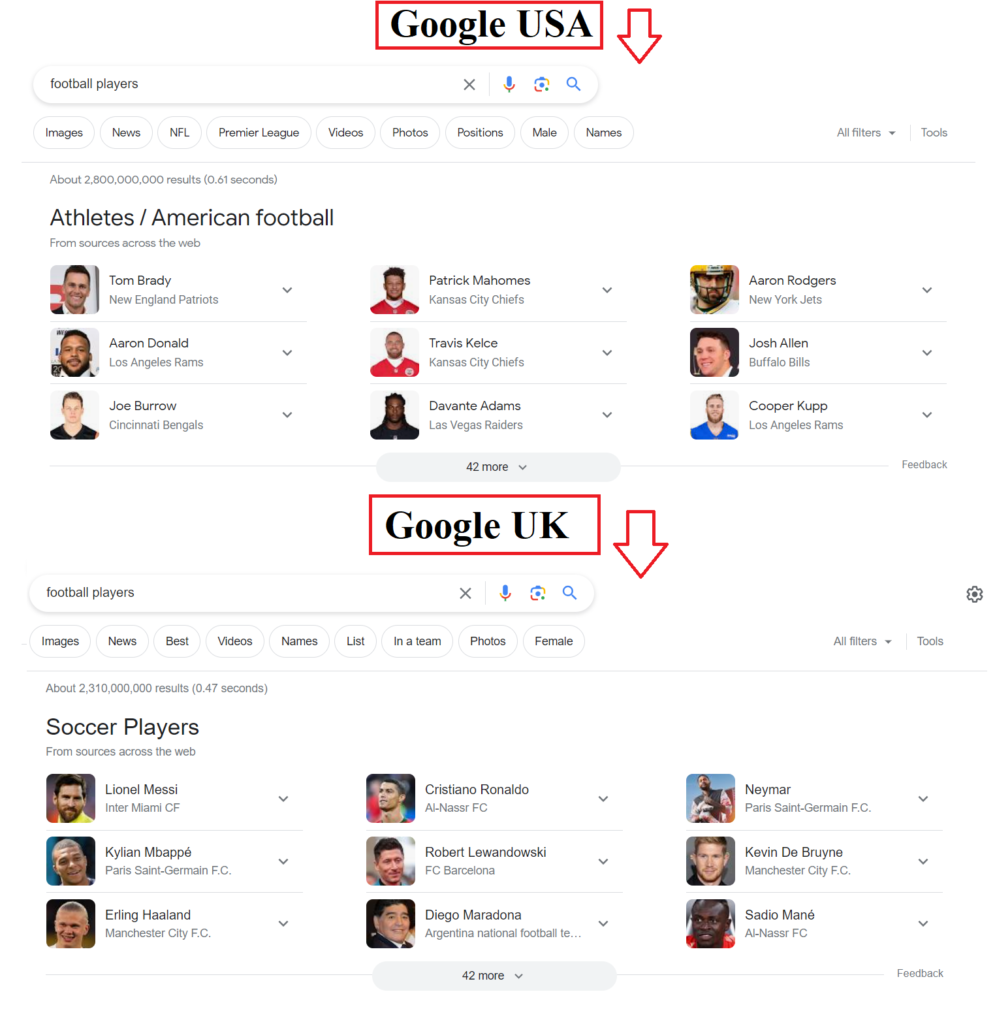
Deciphering User Intent for Success
At its core, every search engine’s mission is to assist users in completing a task—whether that’s reading news articles, making a purchase, or locating a specific document. To do this effectively, understanding user intent is not just important; it’s essential. It serves as a key to unlocking the full potential of semantic search.
User intent goes beyond the basic interpretation of a query. It dives into understanding the reasons that spurred a user to launch the search in the first place. Is the user in the exploratory stage, seeking to learn about a topic? Are they considering making a purchase and comparing options? Or are they looking for a specific website or document?
A search engine can better anticipate and meet user needs by effectively interpreting the user’s intent. This approach is an integral part of semantic search and an essential aspect for any SEO strategy seeking to capitalize on the advantages of semantic search.
Let’s dive a little deeper into this.
Best SEO Hosting For Fast & Optimized Performance
Our optimized SEO hosting ensures your website loads quickly and get ranked higher in the search engine rankings.
Semantic Search and User Intent
The term “search intent” is essentially the motive behind a user’s search query; it’s the “why” behind every “what‘ we type into the search bar. The motive could be to acquire knowledge, purchase a product, or navigate to a specific website, among others.
Consider this scenario – you type in “order sushi” in the search bar. The search results immediately show you local sushi restaurants, their ratings, and possibly even a “place order” button.
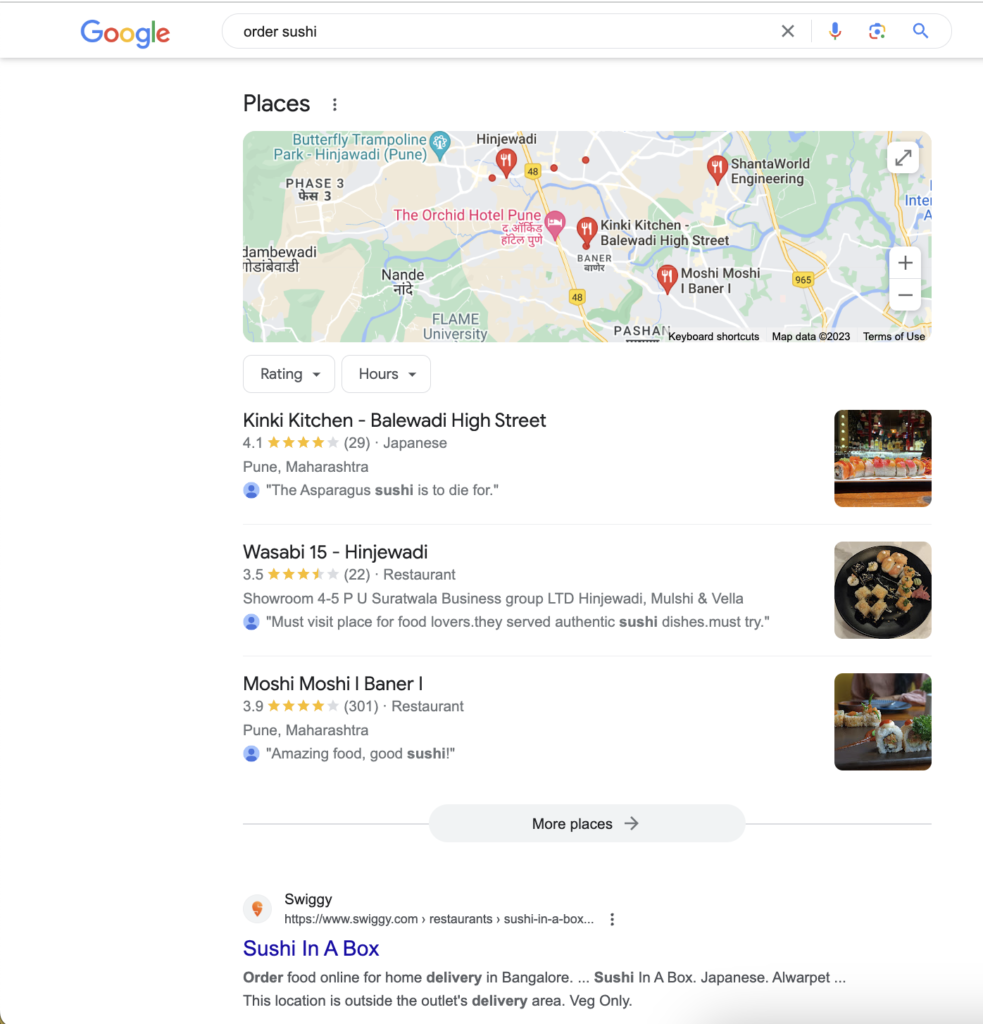
Now, switch the search term to “How to make sushi“. Instead of local restaurants, you are presented with a list of recipes, step-by-step guides, and possibly video tutorials:
If you were to simply search “sushi“, you’d get a mix of results – some local restaurants, some recipes, and some general information about sushi.
These results could also be influenced by your previous search history – if you’ve been searching for sushi recipes, Google might prioritize recipe results over local restaurants.

This variation in search results, based on the user’s intent, is a result of semantic search. It involves a keen understanding of the context of the search term to ensure that the results match the user’s intent.
For instance, “order sushi” indicates a purchase intent; therefore, local restaurants and delivery services dominate the results. Conversely, “how to make sushi” suggests a learning intent, prompting the search engine to provide educational resources.
By distinguishing the user’s intent, search engines can provide more relevant results to the user’s needs, improving the overall search experience.
Vector Search: A Key Component of Semantic Search
Vector search, at its core, is about finding the semantic similarities between words and phrases. It’s like plotting words on a graph where the “distance” between words represents their semantic similarity.
The power of vector search lies in its ability to decipher the intent behind a user’s search query by analyzing semantic connections. For instance, it understands that words like “jaguar,” “leopard,” and “lion” share similar contexts and meanings.
This insight allows it to fetch more relevant, conceptually similar results, even if they don’t contain the exact keywords used in the search. This broader context understanding, achieved through vector search, plays a crucial role in enhancing the efficiency of semantic search systems.
Best Practices for Implementing Semantic Search in WordPress
Now that you know about semantic search, its evolution, and its benefits. Here’s a cheat sheet for getting your blogs to the top SERPs.
1) Create Content with a Clear Focus: A well-defined content strategy is crucial in this process. Focus your content on a specific topic or idea. Use comprehensive, long-form content that covers all aspects of the topic, thereby increasing your chances of matching various user intents.
2) Importance of Structured Data Markup: Structured data markup helps search engines understand the content and context of your site better. Use schema.org markup to help search engines interpret your content and improve your site’s semantic search performance.
3) Role of Long-Tail Keywords in Semantic Search: Long-tail keywords play a crucial role in semantic search as they often mirror the natural language queries users make. Incorporate long-tail keywords in your content to align better with user intent.
4) Conversational Tone in Your Content: A conversational tone makes your content more engaging and aligns with the natural language processing used in semantic search. Use tools like Grammarly or Hemingway Editor to achieve a friendly, conversational tone.
5) Understanding and Catering to User Intent: Understanding user intent and aligning your content with it is key to succeeding with semantic search. Use tools like Answer The Public or AlsoAsked.com to explore users’ different types of questions and queries around your topic.
6) Leveraging Plugins to Improve WordPress Search: To enhance your WordPress search capabilities, consider implementing plugins that are specifically designed for semantic search. Plugins like Relevanssi can replace the default WordPress search, offering more accurate and contextually relevant results to your site visitors.
7) Optimize for Voice Search: As voice search gains momentum, ensure your content is ready for this shift. Focus on creating content that directly answers questions users might ask their digital assistants. Consider tools like Schema App’s Structured Data plugin for WordPress, which can help you implement Speakable Schema for highlighting sections of a webpage that are particularly “speakable”.
8) Implementing Semantic HTML for Better Structure: Utilize semantic HTML tags like <header>, <footer>, and <article> to better define the structure of your content. These elements provide information about the type of content enclosed, aiding search engines in understanding and categorizing your content effectively.
9) Build Relevancy Through Links: Develop a strategic link-building plan to enhance the relevance of your content. Internal-link related articles and pages on your site to create a network of related content.
Externally, seek opportunities to earn links from reputable sites that share a similar context to your content. This can improve your site’s credibility and relevance in the eyes of search engines, thereby enhancing your semantic search performance.
Related: How to Find More Backlink Opportunities [Guide]
Dominate the SERPs with SEO Hosting
Try out our SEO-focused managed cloud hosting for faster performance results, high uptime, and robust security, ultimately giving you higher rankings.
Best Semantic Search WordPress Plugins
When it comes to implementing semantic search in WordPress, there are several powerful plugins available that can enhance the search functionality of your website. This section covers some popular plugins known for their features and settings that contribute to semantic search.
Schema App Structured Data

The Schema App Structured Data plugin is a robust tool that automatically generates schema.org markup for your WordPress content, enhancing its discoverability through semantic search. It applies appropriate schema types to pages, posts, categories, and tags, significantly boosting your site’s SEO.
Further, it integrates Google’s powerful video features, creating structured data for videos hosted on YouTube and Vimeo. Schema App’s Pro version offers advanced solutions, including complete schema.org vocabulary, JSON-LD coding, and ongoing markup maintenance assistance.
Also, the advanced plugin expands capabilities with features like WooCommerce Products markup, linking Category & Tag Definitions to Wikipedia and Wikidata, and Page & Post Review Widget. It even provides dedicated support and a Customer Success Manager for comprehensive optimization.
Schema Plugin

Schema Plugin is a lightweight and fast tool that seamlessly adds schema.org structured data markup to your WordPress site. Designed with user experience in mind, it requires minimal setup and delivers enhanced search results for users.
This schema tool supports various schema.org types and is compatible with various themes and plugins, making it a versatile addition to your WordPress site. For more advanced features, Schema Premium offers increased schema.org type support and customizable data properties, providing a comprehensive SEO solution.
Relevanssi
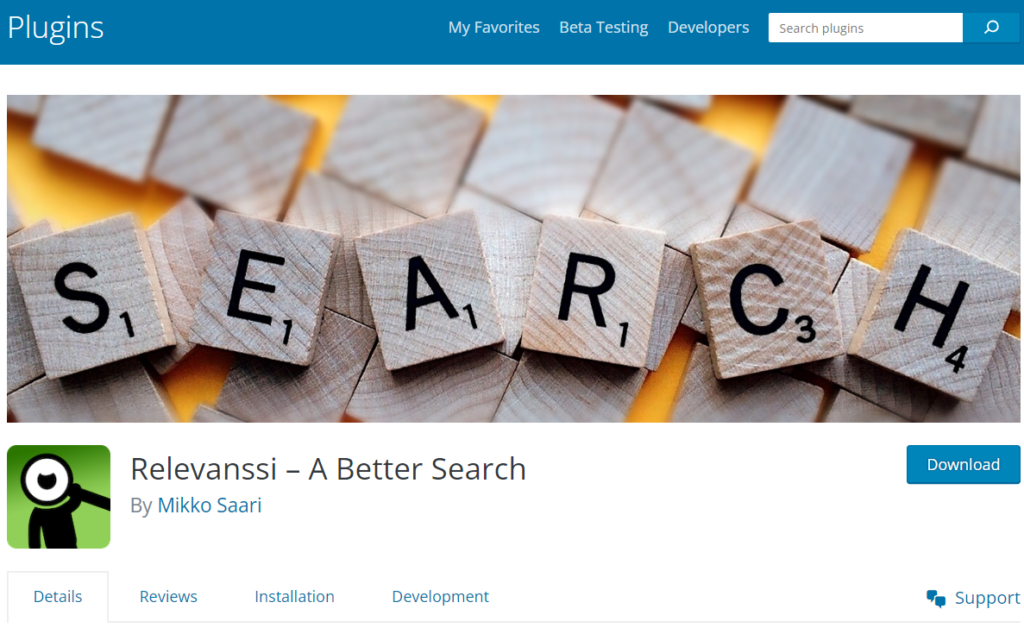
Relevanssi is a comprehensive search plugin for WordPress that enhances the default search functionality and gives you full control over what is searched and how.
It offers features like:
- Searching custom fields
- User profiles
- Taxonomy terms
- Shortcode output
Relevanssi can also index and search PDF documents, making the content within them searchable. The plugin provides better search results, improved user experience, and the ability to customize and refine search data during indexing.
With Relevanssi, you can optimize your search results for semantic search by ensuring that all valuable data on your WordPress site is searchable.
ACF: Better Search Plugin
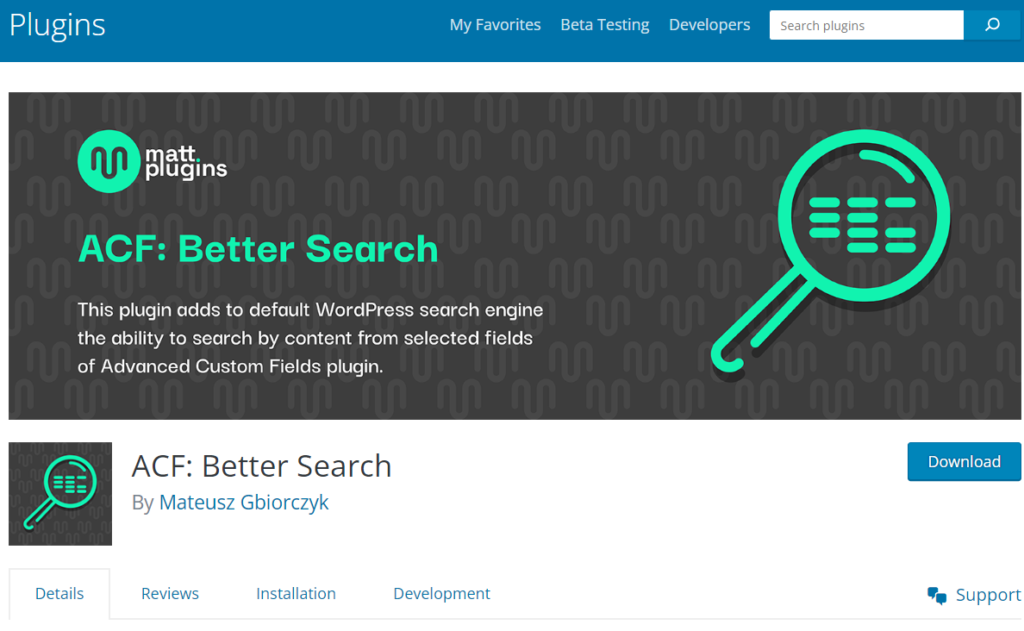
ACF: Better Search Plugin supercharges the native search functionality of your WordPress website. By utilizing selected fields of Advanced Custom Fields, it delivers optimized search results, elevating your site’s SEO and user experience.
Impressively, it supports phrase searching, promoting precise search results. The plugin also showcases a New Search Core, accelerating content searches by roughly 75% and supporting various fields such as Text, Number, Email, and URL.
ACF: Better Search Plugin works automatically, requiring no additional coding and offering a streamlined solution for bolstering your site’s semantic search capabilities.
By incorporating these semantic search plugins into your WordPress website, you can improve the search functionality, accuracy, and relevance of search results, ultimately enhancing the user experience and making it easier for visitors to find the information they are looking for.
Conclusion
In the ever-evolving digital landscape of 2023, the shift from traditional keyword-centric SEO strategies to a more sophisticated approach – semantic search – is undeniable. WordPress, the powerhouse behind a significant chunk of global websites, is at the heart of this transformation.
Semantic search provides an enhanced user experience. It does so by accurately interpreting and delivering results based on the user’s intent instead of just matching keywords. This makes it an integral component of any robust SEO strategy.
As the field of semantic search continues to grow and redefine the SEO landscape, staying updated and appropriately applying these changes becomes essential. Doing so will ensure that your website maintains its visibility and engagement, ultimately contributing to its ongoing success.
Author’s Bio
 |
Jaya is an SEO content writer and has worked for businesses in over 27 different niches. She has written over 150+ blog posts to date and loves creating content in the SEO and Marketing niches. When she’s not writing, she can be found obsessing over a book! |
Start Growing with Cloudways Today.
Our Clients Love us because we never compromise on these
Sarim Javaid
Sarim Javaid is a Digital Content Producer at Cloudways. He has a habit of penning down his random thoughts and giving words and meaning to the clutter of ideas colliding inside his mind. His obsession with Google and his curious mind add to his research-based writing. Other than that, he’s a music and art admirer and an overly-excited person.
